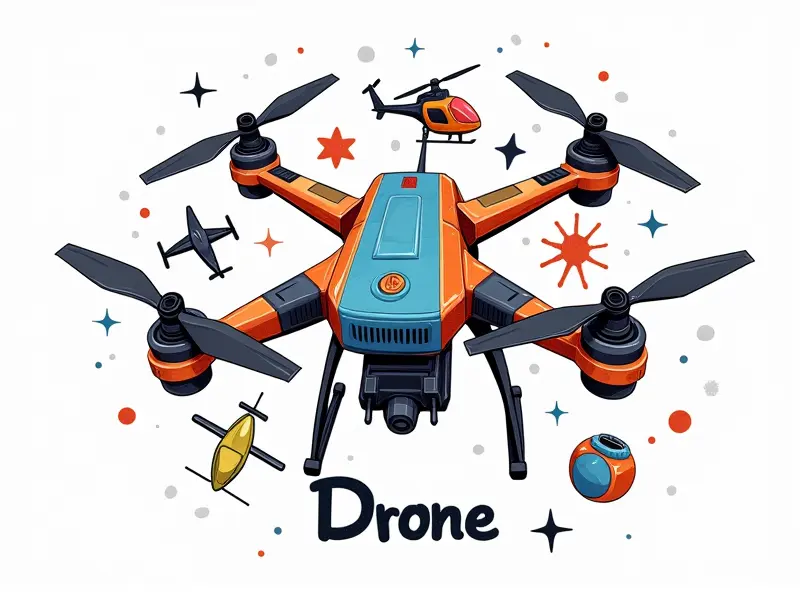How to charge a drone battery

Quick Guide: Charging Your Drone Battery Safely
Charging your drone battery safely is crucial for maintaining its performance and longevity. Follow these steps:
- Use the Correct Charger: Always use a charger that matches your drone's specifications.
- Avoid Overheating: Charge in a well-ventilated area to prevent overheating, which can damage batteries.
- Monitor Charging Time: Don't leave the battery charging overnight; unplug it once fully charged.
Tips for Extending Drone Battery Life While Charging
To maximize your drone's flight time and extend its battery life, consider these tips:
- Battery Maintenance: Regularly clean the contacts to ensure a good connection.
- Limited Fast Charging: Use fast charging sparingly as it can degrade battery capacity over time.
- Temperature Control: Charge your drone in moderate temperatures, avoiding extreme cold or heat.
Maximizing Drone Flight Time Through Smart Charging
To get the most out of each flight, follow these smart charging practices:
- Balancing Batteries: Ensure all cells are evenly charged to maximize overall capacity.
- Charge Before Use: Charge your drone battery fully before every use for optimal performance.
- Monitor Battery Health: Regularly check the battery's health and replace it if its capacity drops significantly.
Essential Steps Before and After Charging Drones
Taking care of your drone before and after charging is vital for maintaining peak performance:
- Before Charging: Inspect the battery for any signs of damage or wear.
- After Charging: Allow the battery to cool down before storing it in a dry, cool place.
Choosing the Right Charger for Your Drone Battery
Selecting the appropriate charger is essential for safe and efficient charging:
- Compatibility: Ensure the charger matches your drone's battery type (LiPo, Li-ion, etc.).
- Features: Look for chargers with safety features like overcharge protection.
- Capacity: Choose a charger that can handle high-capacity batteries without overheating.
Avoiding Common Mistakes When Charging Drone Batteries
Mistakes during charging can lead to reduced battery life and even accidents. Here’s how to avoid them:
- Overcharging: Avoid leaving batteries plugged in for extended periods.
- Incorrect Charger Usage: Always use a charger designed specifically for your drone's battery type.
- Damaged Cables: Use undamaged cables and connectors to prevent electrical issues.
Maintaining Optimal Performance with Proper Drone Charging
To keep your drone operating at its best, follow these maintenance tips:
- Battery Storage: Store batteries in a cool place away from flammable materials.
- Cleaning Contacts: Regularly clean the battery contacts to prevent corrosion and ensure good connection.
- Regular Checks: Periodically check your drone's battery for signs of wear or damage.
How to Charge a Drone Battery Without Overheating
To avoid overheating, follow these guidelines:
- Ventilation: Ensure there is adequate airflow around the charging area.
- Monitor Temperature: Use temperature sensors or apps to monitor battery temperature during charging.
- Limited Charging Time: Charge your drone for only as long as necessary and avoid overcharging.
Tips for Charging Multiple Drone Batteries Efficiently
If you have multiple batteries, here are some tips to charge them efficiently:
- Use a Multi-Port Charger: Opt for chargers that can handle multiple batteries simultaneously.
- Schedule Charging: Plan your charging schedule to ensure all batteries are ready when needed.
- Monitor Each Battery Individually: Use separate ports and monitor each battery's status independently.
The Importance of Balancing Drone Batteries During Charge
Balancing your drone’s battery during charging is critical for maintaining performance:
- Equalize Voltage: Ensure all cells are charged evenly to prevent one cell from becoming overcharged.
- Use a Balancer Charger: Invest in a charger with built-in balancing capabilities.
- Monitor Cell Voltages: Regularly check the voltage of each cell during charging.
Understanding Drone Battery Capacity Ratings
Battery capacity ratings are crucial for understanding your drone’s flight time and performance:
- mAh Rating: Higher mAh means more energy storage, leading to longer flights.
- Voltage: The voltage rating indicates the battery's power output capability.
- C Rating: Indicates how quickly a battery can be charged and discharged without damage.
Conclusion
Properly charging your drone’s battery is essential for ensuring optimal performance, extending its lifespan, and maintaining safety. By following the guidelines outlined in this article—such as using the right charger, avoiding overheating, balancing batteries, and monitoring capacity ratings—you can maximize your drone's flight time and reliability.

